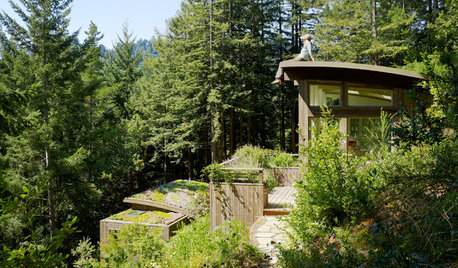Adding soil blends to improve organic matter to subsoil (New Land
NORMdaWORM
10 years ago
Related Stories

GARDENING GUIDESGardening Solutions for Heavy Clay Soils
What’s a gardener to do with soil that’s easily compacted and has poor drainage? Find out here
Full Story
GARDENING GUIDESThe Poop Scoop: Enrich Your Soil With Good Old Manure
Get over the ick factor already — this natural super-ingredient for soil has so many benefits, you'll wonder why you ever went chemical
Full Story
GARDENING GUIDES10 Solutions for Soggy Soil
If a too-wet garden is raining on your parade, try these water-loving plants and other ideas for handling all of that H2O
Full Story
GARDENING GUIDESGet the Dirt on Your Garden’s Soil
Understand how your soil supports your plants so you can ensure your garden’s success
Full Story
LANDSCAPE DESIGNHow to Shape a Rain Garden and Create the Right Soil for It
Learn how to grade, lay out and amend the soil in your rain garden to support your plants
Full Story
MY HOUZZMy Houzz: Japanese Minimalism Blends With Classic New Orleans Style
African art and indoor plants complement the clean and modern aesthetic of two landscape architects
Full Story
MOST POPULARWhat to Know About Adding a Deck
Want to increase your living space outside? Learn the requirements, costs and other considerations for building a deck
Full Story
FALL GARDENING5 Ways to Put Fall Leaves to Work in Your Garden
Improve your soil and yard the organic way with a valuable garden booster that grows on trees
Full Story
REMODELING GUIDESLiving Roofs Crown Green Design
Living roofs save energy, improve air, water, curb appeal — and the view from above doesn't hurt either
Full Story
GARDENING GUIDESHow to Switch to an Organic Landscape Plan
Ditch the chemicals for a naturally beautiful lawn and garden, using living fertilizers and other nontoxic treatments
Full StoryMore Discussions







TXEB
NORMdaWORMOriginal Author
Related Professionals
Reading Landscape Architects & Landscape Designers · Citrus Heights Landscape Architects & Landscape Designers · Clermont Landscape Contractors · Concord Landscape Contractors · El Reno Landscape Contractors · Farmington Landscape Contractors · Long Branch Landscape Contractors · Selden Landscape Contractors · Stony Brook Landscape Contractors · Bellevue Decks, Patios & Outdoor Enclosures · Dedham Decks, Patios & Outdoor Enclosures · Morgan Hill Decks, Patios & Outdoor Enclosures · Parlier Decks, Patios & Outdoor Enclosures · Tooele Decks, Patios & Outdoor Enclosures · Troy Decks, Patios & Outdoor EnclosuresNORMdaWORMOriginal Author
TXEB
Kimmsr
TXEB
TXEB
nil13
TXEB
NORMdaWORMOriginal Author
NORMdaWORMOriginal Author
TXEB
NORMdaWORMOriginal Author
TXEB
NORMdaWORMOriginal Author
TXEB